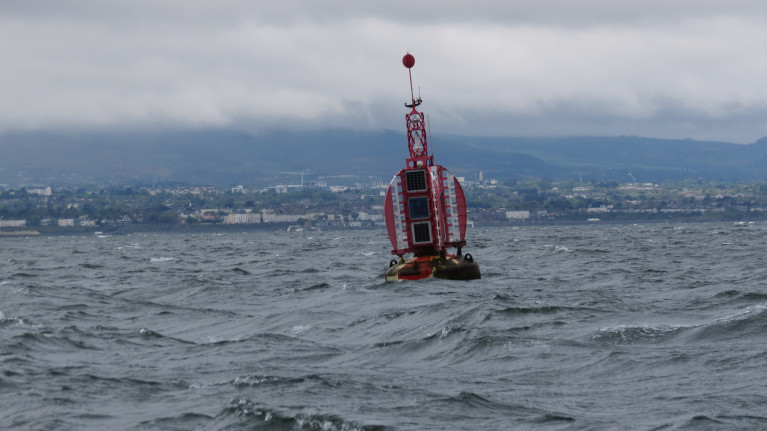After Storm Darcy's Siberian easterly gale-force winds and seas battered Dublin Bay, the weather particularly yesterday saw several ships leave anchorage, arrive elsewhere or ride out at sea, writes Jehan Ashmore
The bad weather yesterday according to the Dublin Bay Buoy (weather by twitter) Afloat consulted in the morning and afternoon, where gusts ranged between 31-37 knots and wave heights of 2m and doubling to more than 4m.
According to Met.ie's shipping forecast, this was for weather conditions of force 5 or 6 and gusty and increasing to force 7 for a time this evening south of Howth Head.
Not surprisingly, masters of ships in Dublin Bay's south-west anchorage quadrant (Q3) closest to Dun Laoghaire Harbour, departed and headed further offshore to waters off Killiney Bay and beyond at the Kish Bank.
A bulk-carrier, Draftzilla which has spent anchorage in Dublin Bay of recent days was forced to head out to sea and take up a position close to the lighthouse.
Afloat also tracked and observe these ships building up yesterday late afternoon as they gathered in relative proximity while off Killiney Bay and likewise passing Bray Head.
The Dublin Port bound ships listed below anchored off Killiney Bay (where some remain this afternoon).
Containership Katherine Borchard from Leixoes, Portugal.
Bulk-carrier YM Advance from Foynes, originally from Indonesia.
Containership Helga from Southampton.
General cargoship Panta Rhei from London/Derry.
Tanker Thun Granite (from Dublin Port) originally from Milford Haven, Pembrokeshire.
This tanker along with fleetmates have notably since last year been frequent anchorage callers off Killiney Bay as they await orders (etc). This led the short-sea tanker to head to Whitegate Refinery in Cork Harbour as consulted today.
In addition containership Arx and cement-carrier Ronez also took to riding out the bad weather yesterday while offshore of Greystones.
Ronez, however was than later forced to the other side of the Irish Sea when off the Llŷn Peninsula, south of Anglesey, where weather also affecting shipping was recently reported.
It transpires as of this afternoon, Ronez is now returning to Irish waters by taking a course heading to Wicklow Head, from where the coaster passed yesterday from the Channel Islands. Afloat will have more on this coaster which since last year has been operating moreso in Irish waters.
Also yesterday afternoon, but from the north-east, off Howth Peninsula, containership JSP Rover was veering towards Killiney Bay from Rotterdam.
In addition from the south, car-carrier Schelde Highway from Zeebrugge was off Bray Head.

























